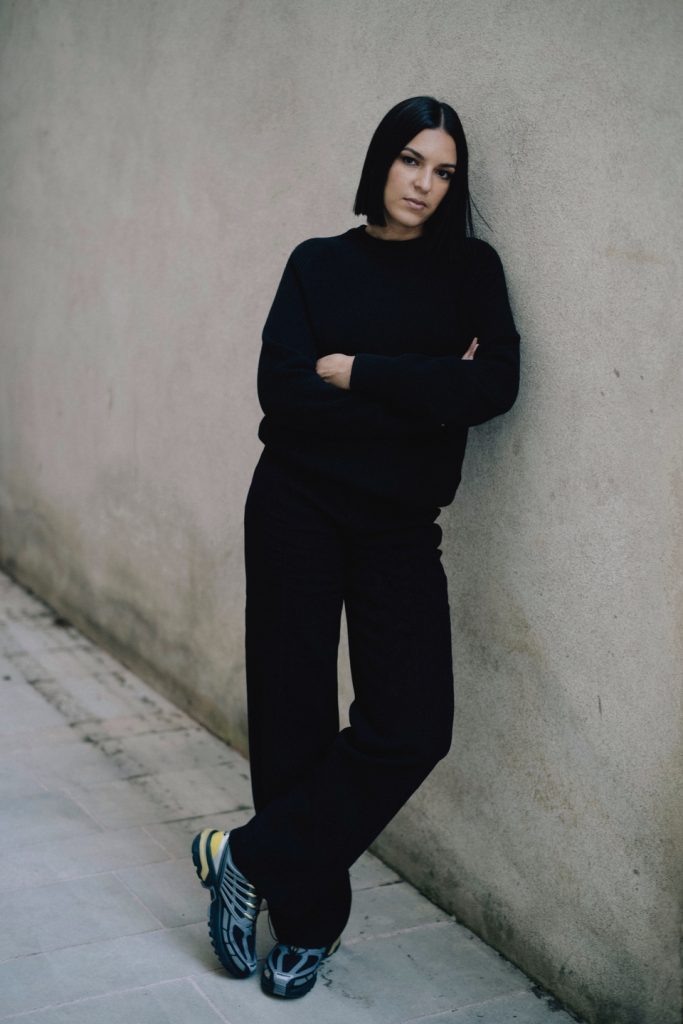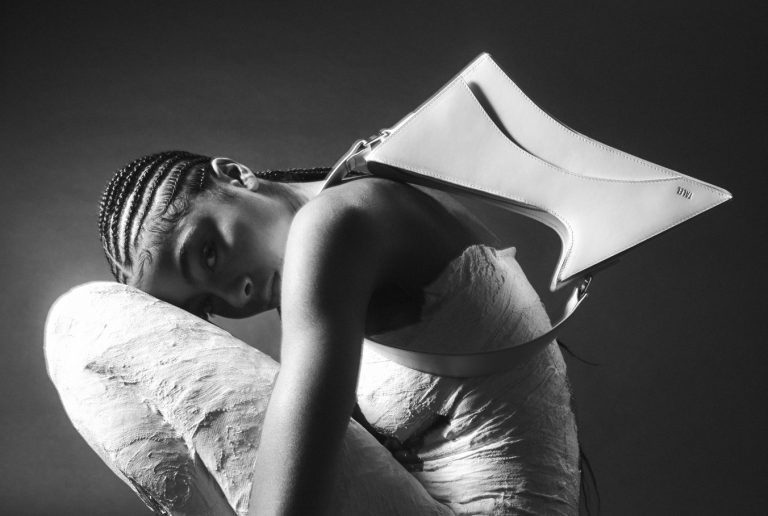
Photography by JONAS JACQUEL
Leila Roukni fuses luxury and shape rebellion in her brand Talel Paris; each of her handbags is a manifesto against conventionalism. Breaking away from the standards of the luxury market and balancing sharp design with practicality, she challenges traditional fashion and gender norms and stands as a beacon of innovative craftsmanship.
hube: Has your background and experience in the industry influenced the unique design approach of Talel?
Leila Roukni: Yes, absolutely. We can say that there is a standardisation in the market, especially in luxury, because of a very safe business model and product strategy. Everyone is doing the same savoir-faire, the same product, the same design, and the same colour. I didn’t recognise myself in this and I wanted to propose something different. Now that I work for myself, I do things by desire, for pleasure and I do not make any compromises in the creative process!
h: In your bio, you mention a focus on unconventional shapes and attention to detail. Can you elaborate on the design philosophy behind the brand?
LR: The fashion world is divided in two, between the big luxury maisons — which are very powerful — and the emergence of young designers supported by the same investment funds that finance luxury. The market is dominated by the biggest and it is very difficult to find a place, so I have decided to do what I wanted to do and to transgress the codes. The triangle is not a shape for a bag? I don’t care. I just want to do it! I like this idea of transgression, of designing ungrateful shapes that are difficult to wear. We want something different, something that doesn’t exist in the market yet.
h: How do you balance the sharp design of your bags with the practicality and functionality demanded by modern urban life?
LR: It is essential to create designs that are inclusive and functional, allowing everyone to feel comfortable and confident. I always try to take the actual needs of people into account, so each functional detail is carefully designed. For example, almost all the Talel bags have an adjustable and removable strap to carry them by hand, on your shoulder, or as a crossbody. I also pay attention to designing interior pockets or spacious compartments to provide more storage space and improve the safety of users. The internal structure of the bag, the choice of the material (lamb leather, for example, is a good option for a light accessory and a soft, supple feel), or the choice of accessories such as zips are also thought through to be practical.
h: You mentioned that the desire for more freedom and creativity in your work led to the creation of Talel Paris. How does this freedom manifest in your designs?
LR: I try to design recognisable and unexpected shapes that other brands do not do. Proportions are not standard — I like to play with strange proportions, I like to surprise. There is no sense in developing a classic shape at Talel. The colour palette is also important in the design process and we can say that the colours are not commercial. There is this desire to stand out and go against what everyone else does.

